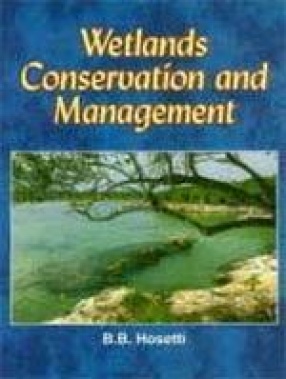
B.B. Hosetti

Showing all 14 books












The title Implications and Applications of Biodiversity Conservation includes chapters on various aspects of implications of biodiversity and on their environmental quality and their survival in the nature. The Chapter one includes the importance of wetlands for the conservation aquatic birds which was discussed in the Ramsar convention 1971 in Ramsar, Iran. This information is provided by Prof. Bharathi D. , from Mahila University, Tirupathi and Prof. B. B. ...

The book has been written covering applied aspects of hydrobiology in order to cater to the needs of students and teacher in Indian universities and colleges. A textbook of this kind will be of immense use of all those who study or teach a special course in aquatic biology or as part of their curriculum. To start with the book in order to explain the relationship of the hydrosphere with other components of the ecosphere, a chapter on biosphere is incorporated as ...


This book stresses on the means, methods, possibilities and options to conserve and manage wildlife. It contains 33 chapters dealing with various facets of wildlife. It is divided into four sections, namely wildlife management, wetland ecosystems, legal information and miscellaneous topics. It starts with information on the biodiversity profile of India, continues to deal with ecological terminologies, causes and threats to wildlife, present scenario of wildlife ...


The biodiversity or biological diversity is the variety of life starting from genes to ecosystems and landscapes. The detailed concepts of types of biodiversity are explained in chapter 1. Chapter 2 deals with specific details of genetic diversity. Prof. Nameer, from Kerala Agricultural University, Thrissur has contributed a chapter on biodiversity and conservation of mammals (chapter 3). The number of hotspots is being increased year after year which is sad news ...


The book collates information on mainly four aspects. First is general aspects of biodiversity, second is information available on Western Ghat biodiversity, the third aspect is related to biodiversity regulations and conventions and the fourth aspect is on some information on the rare and endangered species. These four aspects are spread into nine chapters. Chapter one deals with the general aspects of biodiversity. The information available on the flora and ...

This book "Trends in Wildlife Biodiversity Conservation and Management" has been edited in two volume, on most important aspects of wildlife. It contain 32 chapters contributed by many eminent scientists, officers and teachers from India and United Kingdom. Volume 1 contains information on the topics namely: Status of wildlife management in India, Karnataka, Bhadra wild life sanctuary in the Western Ghats, parental care in Asiatic elephants, Territory ...

This book embodies 17 chapters dealing with the ecobiology of various Ramsar and Non-Ramsar wetlands of India. The status of Ramsar wetlands is presented in chapter one. Chapter two deals with the ecobiology and wildlife status and associated species of Indian mangroves. Ecological diversity of freshwater algae is provided in chapter three. In consecutive chapters information on constructed wetlands like waste stabilisation ponds, Amani tanks, Brachionid ...

This book entitled "Environmental Impact Assessment and Management", embodies 15 chapters covering a wide spectrum Chapter 1. Contains details of EIA, basic elements and methodologies. Further, important guidelines to be followed before establishing industries, water related projects and transport related projects are narrated in chapter 2. Important case studies of EIA viz, second stage expansion of Malpe Fishing Harbour, human impact on Himalayan ...

This book stresses on the means, methods, possibilities and options to conserve and manage wildlife. It contains 33 chapters dealing with various facets of wildlife. It is divided into four sections, namely wildlife management, wetland ecosystems, legal information and miscellaneous topics. It starts with information on the biodiversity profile of India, continues to deal with ecological terminologies, causes and threats to wildlife, present scenario of wildlife ...

Ecotourism is part of the general growth in tourism and reflects increased environmental awareness and the desire for more authentic natural and cultural experiences. With the advent of better transport facilities and communication, people are traveling further and taking more risks in the choices for a holiday from staying with local people in developing countries to adventure sports in some of the world's most remote wilderness areas. Not surprisingly, various ...

India is the seventh largest country and Asia's second most populous country with an area of 3, 387, 263 km-2. It possesses diverse climatic regions and habitats. Though India became independent six decades ago, still we are unable to document and manage our wildlife resources. Presently most of the literature on wildlife is available in the form of few books and monographs which are mainly related to European and African wild life. Good number of workers are ...
